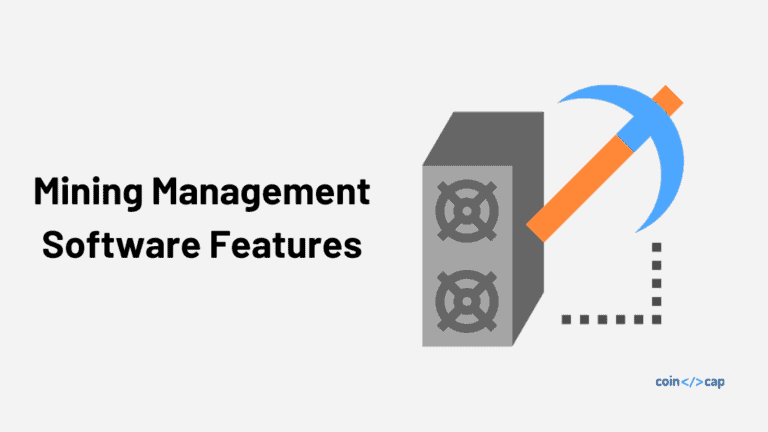There was a need for a way to confirm transactions without the involvement of centralized financial institutions like Visa or PayPal in the middle. So blockchains use a consensus mechanism, which is a system that allows all the computers in a crypto network to agree on fair transactions to ensure that nobody spends the same money twice on the network. The first solution to this problem was Proof of Work. In this article, we will understand Proof of Work from scratch.
Table of Contents
Summary (TL;DR)
- Consensus mechanism is a system that allows all the computers in a crypto network to agree on fair transactions to ensure that nobody spends the same money twice on the network.
- Cynthia Dwork and Moni Naor first published the idea of Proof of Work in 1993.
- Adam Back proposed Hashcash, a Proof of Work system used to limit email spam and denial-of-service attacks, in his research paper in 1997.
- The term
Proof of Workwas first used by Markus Jakobsson and Ari Juels in their article titled Proofs of Work and Bread Pudding Protocols in 1999. - Hal Finney proposed the idea
Reusable Proof of Workin his research paper titled Reusable Proofs of Work in 2004. - Satoshi Nakamoto later applied the concept of proof of Work in the Bitcoin white paper in 2008.
- Proof of Work is a Decentralized Consensus Mechanism that ensures miners add a new block to a cryptocurrency’s blockchain only after solving an arbitrary Mathematical Puzzle and preventing Bad Actors from overtaking the network.
- Bitcoin’s critics believe that it has a very high environmental effect at the cost of increased security it provides.
- Proof of Work also necessitates a substantial investment in resources, such as mining hardware and electricity.
- Major Cryptocurrencies other than Bitcoin, which use Proof of Work, are Litecoin, Monero, Zcash, Siacoin, DigiByte, Bitcoin Cash, Bitcoin SV, Bitcoin Gold, and Dogecoin.
- Some alternatives to Proof of Work are Proof of Stake, Proof of Burn, Proof of Activity, Proof of elapsed time, and Proof of capacity.
History of Proof of Work
1993
- Cynthia Dwork and Moni Naor first published the idea of Proof of Work. Here is the link to their Research Paper. Their goal was to explain a computational technique for combatting junk mail, particularly controlling access to a shared resource, in general.
1997
- Adam Back proposed
Hashcash, a Proof of Work system used to limit email spam and denial-of-service attacks, in his research paper titled Hashcash – A Denial of Service Counter-Measure. Satoshi Nakamoto later used this in bitcoin as part of its mining algorithm.
1999
- The term
Proof of Workwas first used by Markus Jakobsson and Ari Juels in their article titled Proofs of Work and Bread Pudding Protocols. Their goal was to offer definitions treating the notion of a POW and related concepts.
2004
- Hal Finney proposed the idea of
Reusable Proof of Workin his research paper titled Reusable Proofs of Work. He explained that We could reuse Proof of Work (POW) tokens in the RPOW system. A POW token is something that takes a long time to compute but is rapidly verified. Normally, We cannot reuse POW tokens since doing so would allow them to be spent twice. RPOW, on the other hand, provides for a restricted type of reuse, i.e., sequential reuse.
2008
- Satoshi Nakamoto later applied the concept of Proof of Work in Bitcoin white paper.
What is Proof of Work?
Proof of Work is a Decentralized Consensus Mechanism that ensures miners add a new block to a cryptocurrency’s blockchain only after solving an arbitrary Mathematical Puzzle and preventing Bad Actors from overtaking the network.
How does Proof of Work work?
In this section, we will understand the working of Proof of Work. Here we will take the example of Bitcoin.
- When a Bitcoin transaction occurs, it is bundled into a block that must be mined. The hash for the block is then generated using Bitcoin’s proof-of-work mechanism. Bitcoin uses the SHA-256 algorithm, which creates 64-character hashes.
- Miners then race to be the first to generate a target hash below the block hash. The winner adds the latest block of transactions to Bitcoin’s blockchain.
- They also get Bitcoin incentives in the form of newly created coins and transaction fees. Bitcoin’s proof-of-work algorithm intends to add a new block every 10 minutes.
- To do this, it changes the difficulty of mining Bitcoin based on how rapidly miners add blocks. If mining occurs too rapidly, hash computations become more difficult. If it’s going too slowly, hash computations become easier.
Proof of Work Coins
Major Cryptocurrencies other than Bitcoin, which use Proof of Work, are Litecoin, Monero, Zcash, Siacoin, DigiByte, Bitcoin Cash, Bitcoin SV, Bitcoin Gold, and Dogecoin.
What are the Advantages of Proof of Work?
In this section, we will understand the advantages of Proof of Work.
- Technological Breakthrough: Mining companies constantly seek out the most efficient ways to mine to lower their costs. Due to this, they are coming up with the cheapest and newer technology to create faster and more efficient chips for mining. Competition amongst chipmakers can result in breakthroughs in computer hardware.
- Security: The more computational power poured into securing Bitcoin, the more resources a potential attacker needs to attack Bitcoin and perform a 51% attack successfully.
- Zero Downtime: Bitcoin was launched in 2009 and has had an over 99.98% uptime. As of writing, there have only been two instances of downtime: once in August 2010 and another in March 2013. These incidents were solved by opt-in software updates, where network participants decided these updates were in the network’s best interest.
What are the Disadvantages of Proof of Work?
In this section, we will understand the disadvantages of Proof of Work.
- Energy Consumption: Miners need a large amount of computational power to solve the difficult mathematical puzzle. It results in the use of valuable resources (money, energy, space, hardware). This energy will rise as more miners join the quest for mining cryptocurrency. So, environmentalists do not consider it an eco-friendly practice. A single Bitcoin transaction is projected to consume 2,292.5 kilowatt-hours of energy, which is enough to run a normal US household for more than 78 days.
- 51% Attacks: It is a situation where a single entity controls the majority of mining power. The attackers gain enough power to control the majority of network activities. They can dominate the process of adding new blocks. They are capable of reverting transactions. Although this is not a profitable strategy, it needs a massive amount of mining power. And once the network is deemed compromised, users start leaving the network. The cryptocurrency price will undoubtedly fall, and as a result, the value of the funds will decrease.
- Mining Centralization: Mining requires the use of highly specialized computer hardware, and the cost of this hardware is very high, so a normal user cannot mine the crypto. So Now, Mining is increasingly restricted to only a few select mining pools. This threatens the system for centralization. Here is the link where we see the Hashrate distribution of different mining pools.
Alternatives of Proof of Work
Some alternatives to Proof of Work are:
- Proof of Stake
- Proof of Burn
- Proof of Activity
- Proof of elapsed time
- Proof of capacity
Conclusion
Proof of Work was first the preferred consensus mechanism for early cryptocurrencies that required a safe, decentralized manner of processing transactions. Although many new alternatives are recently developed as less energy-intensive options, many major mainstream cryptocurrencies continue to use Proof of Work. However, Bitcoin’s critics believe that it has a very high environmental effect at the cost of increased security it provides. Proof of Work also necessitates a substantial investment in resources, such as mining hardware and electricity. We hope that this guide will be helpful for beginners.
Frequently Asked Questions
Will Bitcoin Adopt Proof of Stake?
Bitcoin was the first cryptocurrency to use Proof of Work. However, by introducing a new mechanism, every miner would have to adjust to a new method that might be complicated. Furthermore, many old loyal Bitcoin owners and miners believe that proof of work is more secure.
Which is better, Proof of Work or Proof of Stake?
Proof of Stake eliminates the need for costly computations. Instead, those with most of the network’s native currency have the authority to validate transactions. As a result, a user can participate in the Proof of Stake system more quickly than in the Proof of Work system. Also, the lack of technical understanding and advanced computer system is needed.
Why do we need Proof of Work?
It prevents users from double-spending. If users could spend their coins more than once, it would effectively make the currency worthless. It is also responsible for issuing new currency into the system and incentivizing miners to do the work. Finally, it enables transactions to be validated and recorded without a central authority.
Also read,










